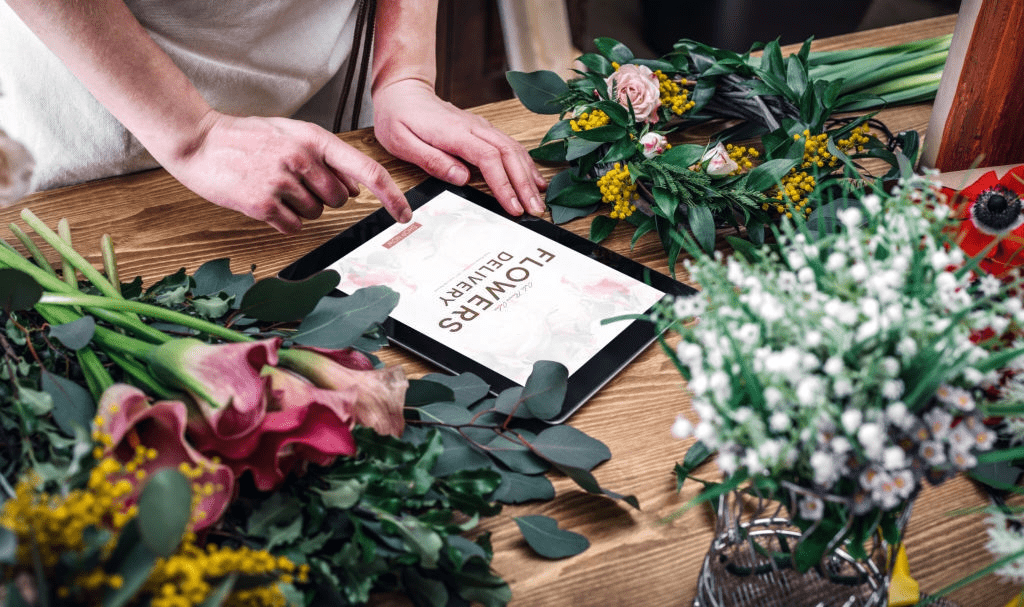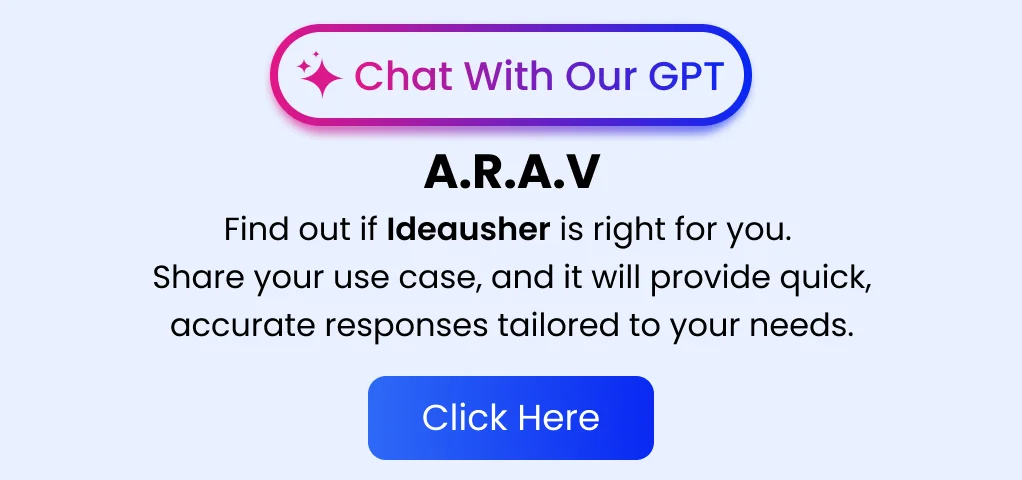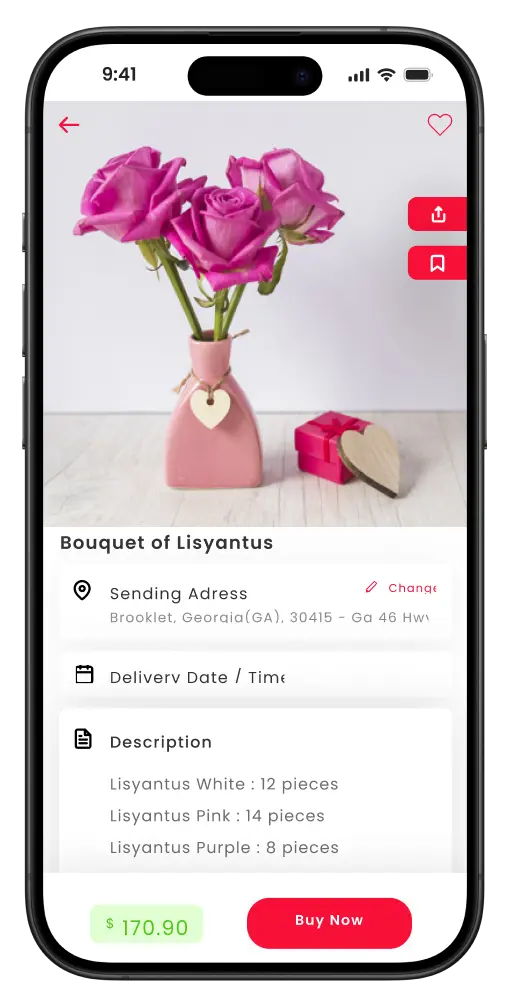The rise in on-demand app businesses has propelled virtually every industry into the online sphere. Sectors like food delivery and cab booking have embraced the on-demand market, and the latest addition to this trend is flower delivery. Even the charming flower shop nestled on the street corner is flourishing in the era of Uberization. Taking advantage of this shift, Flower Business has entered the scene with on-demand and midnight flower delivery services, sparking a substantial increase in demand. Seeking support from app development companies, they opt for white-label solutions to streamline the development of their on-demand flower delivery app.
However, flowers have crossed the traditional boundaries and are no longer confined to special occasions. Whether enhancing corporate meetings, building employee engagements, or decorating homes, flowers have seamlessly become an integral part of every event. For individuals looking to venture into the flower business without a clear starting point, this step-by-step guide provides pragmatic answers, ensuring a smooth initiation into the entrepreneurial journey.
Trends In Flowers Market And Delivery Services
The cut flowers market was worth $36.4 billion in 2022, and it’s expected to grow to $52.2 billion by 2030, growing at a CAGR of 4.6% from 2024 to 2030. Another report suggests it could even reach $53.9 billion by 2032 at a CAGR of 4.2% during the projected period.
Cut flowers serve beyond special occasions; they contribute to the beauty of festivals, celebrations, offices, hotels, and restaurants. The cultivation of popular flowers like roses and lilies often involves contracts with farmers and direct orders. Notably, as per Markets and Markets,
Ethiopia, Kenya, the Netherlands, Pakistan, and Colombia play significant roles in the growth and export of cut flowers, catering to the demand of major importers such as the US, the UK, and Germany. This global exchange reflects the widespread appeal and importance of cut flowers in enhancing diverse environments.
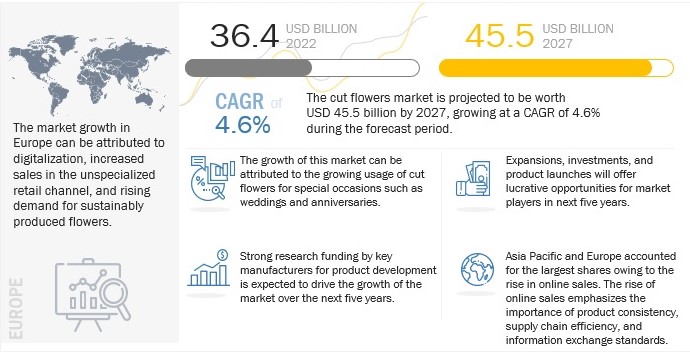
Moreover, flower delivery services are on the rise, and they were valued at $5.7 billion in 2021. Projections indicate it could reach $10.1 billion by 2031. So, investing in the flower business, especially cut flowers, seems like a blooming opportunity!
Guidelines For Starting And Managing A Flower Business
Here’s what you must consider before making informed decisions about products, prices, and strong presence both offline and online with your flower business.
1. Design A Plan
Dreaming big is not a bad thing, but firstly, draw a plan beforehand. Define your target audience and consider the costs involved in procuring flowers. Consider logistics when deciding between nationwide or local delivery, evaluating the practicalities of each option. Additionally, weigh factors such as the scope of delivery—whether nationwide or in a specific area. It would be best if you also examined the workforce required to design the floral arrangements and for delivery.
2. Ask For Help
When launching and managing a flower business, seek expert guidance for a smart strategic plan. Don’t hesitate to consult franchise companies offering information, design setups, and valuable advice. Essential elements include an initial investment, access to local farms, and obtaining a business license. Established companies specialize in helping you meet these requirements seamlessly. Leveraging their expertise streamlines your entry into the floral market, ensuring a solid foundation for your business.
3. Be Adequate Informative
Gone are the days when flowers were restricted to flower bouquets; now you have boutonnieres, centerpieces, marriage floral décor, towering displays at the workplaces, full-fledged gardening contracts, etc. However, it is recommended that you take resources and your money into account, as the development of such a venture requires a large workforce.
4. Make Decision Wisely
Flowers and other associated gifts are perishable and come with a stipulated shelf time. You need to understand completely what works and what doesn’t as per your market needs. It will help if you segregate them accordingly to help your customers make wise decisions and provide them with a value-for-money product. It is okay to falter at some points, as some things come with experience, but you need to do your research correctly.
5. Affordable Pricing
Set prices for your products based on what you’d willingly pay as a buyer. Aligning with affordable pricing indicates you’re on the right track. Strive to quote rates that resonate with your perceived value as a consumer. This approach not only ensures fair pricing but also establishes a customer-friendly stance, guiding your business in a positive direction. Consistency in offering reasonable prices enhances customer satisfaction, trust, and loyalty in your products or services.
6. Robust Offline And Online Presence
Unsatisfactory reviews travel quickly, especially in this age of digitalization. One inappropriate review, be it offline or online, can spoil the years of hard work and struggles you have put together to make your business better and more significant than others. So, take every customer issue sportingly and efficiently. Customers are very fair, and their trust in your brand can do miracles for your business.
Once you’ve completed the initial planning, proceed to outline your application development process and its requirements. Here are some key considerations to keep in mind before planning a flower delivery application.
Types Of Flower Business
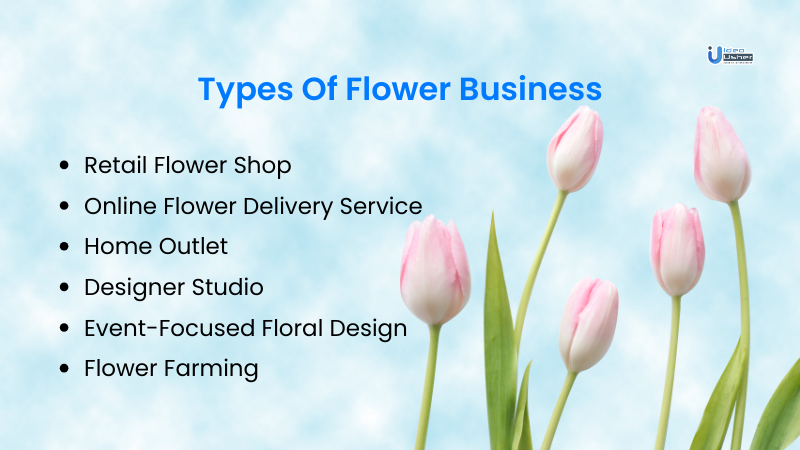
The floral industry offers a spectrum of business models, each presenting unique opportunities and challenges. Comprehending the intricacies of these flower business models is crucial for devising specialized technological solutions. Here are the distinctive types of flower businesses with their individual features and prerequisites:
1. Retail Flower Shop
A traditional brick-and-mortar establishment where customers can immerse themselves in the allure of flowers and make spontaneous purchases. This model thrives on in-person interactions, emphasizing a physical presence that engages customers within the store.
2. Online Flower Delivery Service
Leveraging the vast reach of the internet, this business model caters to a broader customer base. Users can explore a range of flower options, place orders online, and anticipate the seamless delivery of flowers to their doorstep. Crucial aspects include developing an intuitive e-commerce platform and implementing efficient delivery logistics.
3. Home Outlet
Operating a flower business from the comfort of one’s home provides a cost-effective entry point. This model is an excellent choice for those looking to start small with the potential for gradual expansion. Key considerations involve minimizing initial overhead costs and creating a scalable business model.
4. Designer Studio
The designer studio model focuses on creating custom-made floral designs for diverse events and occasions. Creativity and customization take center stage here, requiring the employment of skilled florists and the implementation of customization tools for customers.
5. Event-Focused Floral Design
Specializing in providing floral arrangements for significant events such as weddings and corporate functions, this model involves tight collaboration with event planners. Adaptability to different themes and seasons is crucial, requiring a robust event coordination module.
6. Flower Farming
Ideal for gardening enthusiasts with outdoor space, flower farming involves cultivating and selling flowers. Success in this model requires horticultural knowledge and integration with retail or event-focused businesses through a crop management system.
Technological Solutions For Flower Businesses
Meeting flower business needs means adding tech features for better user experiences. This involves breaking down tech solutions for the floral industry’s different aspects:
1. E-Commerce Platform Features
At the core of flower businesses lies a robust e-commerce platform, crucial for seamless transactions and heightened customer satisfaction. Key features encompass:
- Seamless Browsing: Intuitive interfaces for customers to effortlessly browse through an extensive array of floral offerings.
- Ordering Interfaces: Streamlined processes that simplify the order placement, ensuring a user-friendly experience.
- Secure Payment Gateways: Implementing advanced security measures to instill confidence in customers during online transactions.
2. Delivery Management System
Efficient delivery management is vital for flower businesses, ensuring timely and secure delivery to customers. Technological features include:
- Real-Time Tracking: Empowering customers with real-time tracking capabilities, allowing them to monitor the status and location of their flower orders.
- Route Optimization: Enhancing delivery efficiency by optimizing routes for delivery personnel, reducing delivery times and costs.
3. Home Outlet App
For businesses operating from home, a dedicated app is instrumental in managing operations and engaging with customers. Technological features include:
- Inventory Management: Efficient tools for small-scale operations, allowing for meticulous tracking and management of available floral inventory.
- Customer Engagement Features: Implementing features that enhance customer interaction, such as personalized notifications, loyalty programs, and order history tracking.
4. Customization Tools For Designer Studio
Designer studios thrive on creativity and personalized floral designs. Technological features encompass:
- Virtual Arrangement Previews: Allowing customers to visualize and customize floral arrangements virtually before making a purchase.
- Collaboration Features: Facilitating seamless communication between customers and florists, ensuring a collaborative approach to crafting unique designs.
5. Event Coordination Module
For businesses specializing in event-focused floral designs, effective coordination is paramount. Technological features include:
- Calendar Integration: Streamlining event scheduling by integrating with calendars, ensuring accurate and efficient coordination.
- Bulk Order Management: Tools to manage bulk orders seamlessly, enabling businesses to cater to events of varying scales.
6. Crop Management System For Flower Farming
Flower farming businesses benefit from technology that aids in cultivation and sales. Technological features include:
- Growth Tracking: Monitoring the growth and health of cultivated flowers, providing insights into optimal harvesting times.
- Supply Chain Integration: Connecting with retail or event-focused businesses through integrated supply chain solutions, ensuring a seamless process from cultivation to sale.
What If There Were An App For Every Business Need?
An all-in-one app can address every flower business need. It can seamlessly integrate features for retail, delivery, home outlets, designer studios, events, and farms.
- With a user-friendly interface, it provides a comprehensive e-commerce platform for effortless browsing, secure transactions, and real-time tracking.
- For home-based businesses, it simplifies inventory and engages customers with personalized notifications.
- Designer studios utilize virtual arrangement previews and collaborative tools.
- Event-focused businesses benefit from streamlined coordination, while flower farms leverage growth tracking and supply chain integration.
Such an app can serve as a technological foundation, enhancing user experiences and operational efficiency for all types of flower businesses.
Why Must You Consider App Development For Your Flower Business?
Entering into app development for your flower business brings various benefits, nurturing a strategic leap to reach broader audiences and enhance operational efficiency.
1. Broadening Reach
Leverage app development to transcend physical store limitations, tapping into an expansive online audience. With an app, you can effortlessly tap into a global online audience, fostering growth and establishing a prominent digital presence.
2. Customer Convenience
An app empowers you to provide customers with a seamless flower shopping experience. You can enable them to easily browse, order, and receive doorstep deliveries—all from the comfort of their homes.
3. Streamlined Order Management
By incorporating app-driven automation, you can streamline your order and delivery management. Ensure timely and accurate fulfillment of your customers’ preferences, optimizing operational efficiency for a more responsive and dynamic business.
4. Task Automation
Seamlessly automate essential tasks like invoicing, payment processing, and customer service. By doing so, you can not only save time but also elevate your client service standards, enhancing your overall business efficiency.
5. Sales Surge
Harness the convenience and efficiency of an app to witness a substantial increase in your sales. Elevated customer engagement and streamlined processes contribute to a noticeable upswing in your business revenue.
6. 24/7 Service Availability
Transform your business into a continuous service provider with an app that facilitates around-the-clock customer interaction and transactions. Offer unrivaled accessibility, reinforcing customer loyalty and satisfaction.
7. Personalized Design Experience
Grant your customers the power to customize their flower orders through the app, enriching their shopping journey. Introduce a sense of individuality and connection, enhancing their overall experience and satisfaction.
Key Consideration Before Planning An App For The Flower Business
1. Thorough Planning And Analysis
Conduct a detailed assessment of your target audience, local flower delivery market, profit margins per order, and associated costs. Decide whether to integrate your existing flower store or collaborate with multiple shops.
2. In-Depth Market Analysis
Examine customer demand and gather essential data crucial for the app’s development and launch. This comprehensive approach is important for sustained success in the competitive market.
3. Strategic Budgeting
Develop a thorough budget covering aspects like employee hiring, hardware, marketing, quality assurance, updates, patents, licenses, and other necessities. This strategic financial plan ensures smooth development and operation. By addressing every aspect of your financial needs, you establish a solid foundation for success, minimizing potential challenges and ensuring the efficient functioning of your business or project.
4. Idea Validation
Provide compelling reasons for venturing into the online flower delivery domain. Validate your concept by explaining how it fulfills a specific need or resolves a market problem. By clearly articulating the value your venture brings, you not only establish its relevance but also demonstrate a strategic understanding of market dynamics. This approach not only attracts potential stakeholders but also enhances your chances of success by aligning your online flower delivery service with genuine market demands.
5. Draw Inspiration From Success
Study other successful apps in the domain to understand the factors contributing to their success. Analyze user preferences and industry trends to incorporate innovative features into your app.
6. Evaluate Market Sustainability
Evaluate the long-term sustainability of your target market. Ascertain whether the demand for flower delivery is a temporary trend or positioned for sustained growth in the foreseeable future. By conducting this analysis, you can make informed decisions about the viability of your business in the long run. Understanding the market helps you draft your strategies accordingly, ensuring that your flower delivery venture is well-positioned to thrive over an extended period rather than being influenced solely by short-term fluctuations or trends.
7. Comprehensive Planning
Develop a thorough business plan encompassing project timelines, a tentative release date, and contingency plans for potential challenges. This comprehensive strategy provides a roadmap for successful app development.
Launching an on-demand flower delivery app demands thorough research, strategic planning, and substantial resources. Prioritize these key steps to ensure a robust foundation for your venture and set yourself up for long-term success in this competitive market.
Must-have Features Of An All-In-One App For Flower Business
Here are some features you can consider for your user, admin, and seller panel:

1. User Panel
1.1. User Registration/Login
Easily create accounts or log in for personalized experiences, ensuring a seamless and secure entry point for users.
1.2. Intuitive Browsing
Enjoy a user-friendly interface facilitating effortless exploration of flower listings and categories for a smooth shopping experience.
1.3. Order Placement
Seamlessly place orders with customization options, enabling users to create personalized floral arrangements with ease and convenience.
1.4. Secure Transactions
Conduct secure and smooth transactions through trusted payment gateways, fostering confidence in the safety of online purchases.
1.5. Real-time Order Tracking
Monitor orders in real-time, staying informed about order status and delivery progress for enhanced customer satisfaction.
1.6. Personalized Notifications
Receive tailored notifications, keeping users updated on order status, promotions, and relevant events for a personalized and engaging experience.
1.7. Virtual Arrangement Previews
Visualize and customize floral arrangements virtually, providing users with a preview of their selected designs before making a purchase.
1.8. Collaborative Tools
Engage in collaborative design with florists, utilizing tools that facilitate communication and interaction to create unique and personalized floral arrangements.
1.9. Event Coordination Tools
For event-focused users, access tools for bulk orders, calendar integration, and efficient coordination, ensuring seamless event planning and flower arrangements.
1.10. Growth Tracking and Supply Chain Integration
Benefit from features allowing flower farms to track crop growth and seamlessly integrate with the supply chain for efficient sales and distribution.
2. Admin Panel
2.1. Dashboard
Access a comprehensive overview of key metrics, order status, and user activity, providing efficient management and strategic decision-making insights.
2.2. Order Management
Efficiently manage and track orders, ensuring timely and accurate fulfillment while streamlining operational processes.
2.3. Inventory Management
Streamline inventory tracking and management for home-based businesses, ensuring accurate stock control and efficient order processing.
2.4. Customer Relationship Management (CRM)
Maintain detailed customer profiles, order history, and personalized interactions, fostering effective customer relationship management.
2.5. Notification Management
Admin control over sending announcements, promotions, and personalized notifications, ensuring effective communication with users and sellers.
2.6. Collaboration Interface
Provide tools for effective communication and collaboration between admins, sellers, and designers, facilitating a cohesive operational environment.
2.7. Analytics and Reporting
Generate detailed reports on sales, user behavior, and inventory, enabling data-driven decision-making and strategic planning.
2.8. Security Features
Implement robust security measures to safeguard user data and transaction information, ensuring a secure and trustworthy platform.
3. Seller Panel
3.1. Seller Registration/Login
Easily register and log in, providing a dedicated platform for sellers to manage their floral businesses efficiently within the app.
3.2. Inventory Management
Efficiently update and manage flower listings and stock, ensuring accurate and up-to-date inventory for potential buyers.
3.3. Order Processing
Manage and process incoming orders efficiently, streamlining the seller’s role in fulfilling customer demands and ensuring timely deliveries.
3.4. Collaboration Interface
Provide effective communication tools for sellers to interact with customers or event planners, fostering collaboration and understanding customer needs.
3.5. Growth Tracking
For flower farms, features to monitor crop growth and harvest times, facilitating optimal cultivation practices and planning for sales.
3.4. Supply Chain Integration
Seamless integration with the supply chain for timely and efficient sales, ensuring a smooth flow of products from farms to buyers.
3.5. Reporting and Analytics
Access detailed reports on sales, customer feedback, and performance analytics, empowering sellers with insights to refine and enhance their business strategies.
3.6. Promotion Tools
Utilize features to run promotions, discounts, and marketing campaigns, enabling sellers to attract and engage customers effectively.
How To Develop An App For Flower Business?
After considering all the factors and conducting market research, it’s time to put those results into action. Here are the steps to transform your flower business idea into a working stage:
Step 1. Define Your Unique Selling Proposition (USP)
Before delving into the technical aspects of developing an app for your flower app, it’s crucial to define your Unique Selling Proposition (USP). Identify what makes your app stand out—whether it’s innovative features, a distinctive user experience, competitive pricing, or a unique marketing strategy. Moreover, you must outline the core functionality of your app – if it’s focused on delivery, management, inventory, or decor — and decide the USP around it.
Step 2. Choose The Monetization Model
Before going straight into the development, technicality, and functionality, you must construct the revenue model for the application. Here are a few ways you can explore ways to monetize your app:
2.1. Paid Apps
There are different types of apps listed in the app store; some are paid, and others are free. This depends on the company that launches the application. The cost of the app is also not fixed; it may vary depending on the application model, mobile platform, and app functionality.
2.2. In-app purchases
You can launch a free fitness app but make it more profitable by promoting a premium subscription after the installation of your app. There are many types of in-app purchases, such as premium account purchases, within-an-hour delivery etc.
2.3. Ads
For the significant revenue returns from your application, advertisement is the easy option. You can collaborate with other businesses and allow them to run advertisements in your app. You can charge as a cost-per-click or a cost-per-mile commission.
Step 3. Identify Basic Features
There are various basic features in every layout of an application. These features make your app enticing and interactive.
3.1. User Profiles
Implement user profiles to enable users to create personal accounts. This feature facilitates seamless transitions between devices without requiring users to repeatedly enter their information.
3.2. Notifications
Incorporate push notifications to keep users informed about new discounts, promotions, and upcoming events. Timely notifications enhance user engagement and contribute to the overall user experience.
3.3. Social Media Sharing
Enable users to share their achievements on social media platforms. This not only fosters a user community but also serves as a valuable promotion tool for your flower delivery app.
Step 4. Begin Inception Phase
The inception phase is a critical step in the development of your flower delivery app. It lays the foundation for the entire project and involves several key activities:
4.1. Project Kickoff Meeting
Initiate the inception phase with a project kickoff meeting. Bring together key stakeholders, including business owners, project managers, developers, and designers. Discuss the project’s objectives, goals, and expectations. This meeting sets the tone for collaboration and ensures everyone is aligned with the project vision.
4.2. Define Demographics and Target Audience
Understand your target audience and define the demographics of your flower app users. Consider factors such as age, location, preferences, purchasing, and booking behavior. This information is crucial for tailoring the app to meet the specific needs and expectations of your users.
4.3. Market Research
Conduct thorough market research to identify competitors, market trends, and potential challenges. Analyze successful flower delivery apps and similar apps from the flower industry and understand what makes them popular. This research informs strategic decisions, helping your app stand out in a crowded market.
4.4. Create a Project Roadmap
Develop a comprehensive project roadmap that outlines the entire development process of your app dedicated to the flower business. Define milestones, timelines, and deliverables. This roadmap serves as a guide for the development team, ensuring a structured and organized approach to project execution.
4.5. Plan Resources and Budget
Determine the resources required for the project, including personnel, technology, and tools. Develop a detailed budget that covers all aspects of the development process, from hiring professionals to covering software and hardware expenses. Establishing a clear budget ensures financial transparency and effective resource allocation.
4.6. Minimum Viable Product (MVP) Definition
Define the features and functionalities that constitute the Minimum Viable Product (MVP). The MVP is the initial version of your flower delivery, decor, or similar app that includes essential features for a basic, functional user experience. This approach allows for quicker development, testing, and incorporation of user feedback.
4.7. Feasibility Assessment
Assess the feasibility of the project by considering technical, economic, and operational factors. Identify potential risks and challenges that may arise during development. This assessment guides decision-making and helps in developing strategies to mitigate risks.
4.8. Technical Discovery
Engage in technical discovery discussions to explore the most suitable technologies, frameworks, and development tools for the project. This phase involves making informed decisions on the architecture and infrastructure that will support the app’s functionality.
4.9. User Experience (UX) and User Interface (UI) Planning
Collaborate with UX/UI designers to plan the overall look and feel of the app. Discuss user journeys, wireframes, and design concepts. This collaborative effort ensures that the design aligns with both user expectations and technical feasibility. Ensure your app design puts emphasis on your USP to imprint it on your user’s subconscious.
4.10. Prototyping
Create a visual prototype of the app for your flower business to provide a tangible representation of the planned user interface. Prototyping allows stakeholders to interact with a basic version of the app, offering valuable insights before full-scale development begins.
4.11. Documentation
Document all decisions, plans, and outcomes of the inception phase. This documentation serves as a reference point for the entire development team and ensures clarity on project objectives and requirements.
For that, you can bring a technical writer to your team who will be responsible for the technical documentation of your flower application. He will prepare the product’s technical specifications based on the client’s requirements. This includes use cases, platforms, and all other critical information for the fitness app developers to start working out the solutions.
The inception phase, spanning approximately 4 to 6 weeks, sets the stage for the subsequent development stages by providing a clear roadmap, defining the MVP, and addressing technical and design considerations. It is a crucial step in transforming your flower delivery app concept into a well-defined and executable project.
Step 5. Design The App
During this phase, the development team focuses on crafting the visual elements and user interface (UI) of your flower business application. The design process involves creating the screens, often referred to as “skins,” which are the graphical representations of the app’s user interface. The duration of this phase, approximately 160 hours, may vary depending on the complexity of the app.
5.1. Wireframing
Wireframing is a fundamental aspect of the design phase. It involves the creation of wireframes, which serve as blueprints outlining the basic structure and layout of your flower delivery app. Designers invest significant time, around 160 hours, to develop high-resolution screens, known as “skins,” based on the initial prototype. This step ensures a clear and organized visual representation of the app’s structure.
5.2. UX/UI Design
Crafting an intuitive and visually appealing user experience (UX) and user interface (UI) is the primary focus of this design phase. The goal is to create an aesthetically pleasing and user-friendly app layout that enhances the overall user experience. Designers use their expertise to blend functionality with an attractive design, ensuring that users find the app both easy to navigate and visually engaging.
Step 6. Develop The App
At this stage, the development of the app’s frontend and backend takes place.
6.1. Frontend Development
In the frontend development stage, you must focus on making the part of the app you can see and interact with. It’s like creating the look and feel—choosing colors, adding buttons, and making everything work smoothly for you. Here are the stages:
- Choose appropriate technologies for frontend development. Consider frameworks like React, Angular, or Vue.js based on your team’s expertise and project requirements.
- Set up the development environment, version control system (e.g., Git), and project structure. This ensures a streamlined workflow for the frontend development team.
- Implement the designed UI components and layouts. Convert wireframes into functional components, ensuring responsiveness across various devices and screen sizes.
- Incorporate interactive elements and animations to enhance the user experience. Ensure smooth navigation and intuitive user interfaces, aligning with the UX/UI design specifications.
- Connect the frontend with backend services through APIs. Implement communication protocols to fetch and update data, ensuring seamless data flow between the frontend and backend.
- Choose and implement a state management solution (e.g., Redux for React) to manage the application’s state effectively. This is crucial for maintaining consistency and synchronicity in the user interface.
- Achieve frontend code robustness with extensive testing—unit, integration, end-to-end and enhance performance by minimizing load times, reducing requests, and implementing caching. This ensures heightened app speed and responsiveness, offering users a seamless and efficient experience.
6.2. Backend Development
Now, in the backend development stage, you will build the behind-the-scenes stuff that makes everything work. It’s like the engine of a car, handling things like storing data, managing user accounts, and connecting with payment systems. Here, it is important to ensure it is strong, fast, and secure. Here are the stages:
- Choose an appropriate server-side architecture (e.g., microservices, monolithic) based on scalability and project requirements. Set up server environments and databases.
- Design the database schema based on the data requirements. Implement the database using technologies such as MySQL, PostgreSQL, or MongoDB. Ensure data integrity and security.
- Develop RESTful or GraphQL APIs to expose backend functionalities to the frontend. Define clear API endpoints for operations like placing orders, updating inventory, and managing user accounts.
- Implement secure authentication mechanisms (e.g., OAuth, JWT) to ensure user identity verification. Set up authorization rules to control access to different parts of the application.
- Integrate a secure payment gateway to facilitate transactions. Implement encryption and secure protocols to safeguard sensitive user information during payment processes.
- If necessary, integrate third-party services for functionalities like geolocation, delivery tracking, or social media sharing. Ensure seamless communication between your app and external services.
- Perform rigorous testing of backend functionalities. Design the backend to be scalable, considering potential increases in user traffic. Optimize database queries, use caching mechanisms, and implement load balancing to ensure optimal performance.
- Implement security best practices, including data encryption, input validation, and protection against common vulnerabilities (e.g., SQL injection, cross-site scripting).
- Create comprehensive documentation for the backend code, APIs, and database structure. This documentation serves as a valuable resource for future development, debugging, and maintenance.
Step 7. Quality Assurance
After the initial development, conduct thorough quality assurance testing. This step involves identifying and rectifying any bugs, crashes, or missing features. The testing phase ensures a robust and error-free flower delivery app.
Step 8. Deployment, Marketing, And Promotion
Once the app passes quality assurance, deploy it to the respective app stores (e.g., Apple App Store, Google Play Store). Ensure compliance with platform-specific guidelines and regulations.
After the deployment, implement a comprehensive marketing strategy to promote your flower delivery app. Utilize digital marketing channels, social media, and partnerships to increase visibility and attract users.
By following these comprehensive steps, you can transform your flower delivery app idea into a fully functional and successful application, setting it apart in the competitive market.
Tech Stack Of An All-In-One App For Your Flower Business
Here are the tech stack that you may require for the development of a flower delivery app:
| Aspect | Technology/Service |
| Frontend Development | React Native or Flutter |
| JavaScript or Dart | |
| Material UI (React Native) or Cupertino (Flutter) | |
| Backend Development | Express.js (Node.js) or Django (Python) |
| Database | MongoDB or PostgreSQL |
| Authentication | JSON Web Tokens (JWT) |
| Server | AWS or GCP; Docker for containerization; Kubernetes for container orchestration |
| Payment Gateway | Stripe, PayPal, or other gateways |
| Geolocation Services | Google Maps API or Mapbox API; Integration for routing and navigation |
| Push Notifications | Firebase Cloud Messaging (FCM) or OneSignal |
| Data Storage | AWS S3 or Google Cloud Storage |
| Redis for caching | |
| Real-time Updates | WebSocket with Socket.IO |
| Security | SSL/TLS Certificates, HTTPS, encryption |
| Analytics and Monitoring | Google Analytics or Mixpanel; New Relic or Prometheus for monitoring |
| Testing | Jest for unit testing; Selenium or Cypress for end-to-end testing |
| Version Control | Git (GitHub or GitLab) |
| Collaboration Tools | Slack or Microsoft Teams for communication; Jira, Trello, or Asana for project management |
Future Of Flower Business
The future of the flower business looks promising, marked by exciting changes on the horizon. Technology is stepping up to speed up flower growth, bringing in new and clever ways of production. Simultaneously, innovative packaging ideas are enhancing efficiency throughout the supply chain.
As the demand for flowers rises, especially for events like weddings and parties, there’s an added push for floral decorations at home post-pandemic. This surge in interest is creating a vibrant market for the flower business.
In the background, technology isn’t just helping flowers grow faster; it’s also streamlining business operations. Automated systems powered by smart tech are ensuring better inventory management, making the entire process smoother and less wasteful.
And here’s the eco-friendly twist—flowers are becoming more planet-friendly. The industry is working hard to make them more affordable while adopting sustainable practices, aligning with global efforts for responsible consumption.
Looking at the bigger picture, the flower business is gearing up for substantial growth. Projections indicate a robust 6.3% increase in the market over the next five years, reaching an impressive $57.4 billion by 2024—showing a substantial leap from $42.4 billion in 2019. (source: Petal Republic)
The future of the flower business is a colorful mix of technological innovation, increased demand, sustainability, and significant market growth. It’s a blossoming garden that holds exciting possibilities for the industry.
Conclusion
The flower business is a prominent concept in present and future markets. With its remarkable benefits, it presents a lasting opportunity for a successful venture. To create a flower delivery platform or an all-in-one app for your flower business, consider obtaining a customized application. Opting for a reputable app development company such as Idea Usher ensures the development of a tailored solution that aligns seamlessly with your business goals and objectives.
How Can Idea Usher Help?
Idea Usher is a pioneering web – app development company where we build robust, scalable, and innovative technology solutions. Our comprehensive knowledge and tech acumen in Android, as well as iOS, make us a suitable fit for your Flower Delivery App development. So, feel free to get in touch with us and get your free quotes.
Work with Ex-MAANG developers to build next-gen apps schedule your consultation now
FAQ
Q. How can I start a flower business?
A. Starting a flower business involves several essential steps, such as defining your business model, creating a comprehensive business plan, registering your business, sourcing suppliers, setting up your shop, building a professional portfolio, and developing pricing packages and marketing strategies.
Q. What is the profitability of a flower business?
A. A flower business can be profitable if managed effectively. However, success depends on factors such as market demand, competition, location, pricing strategy, product quality, and marketing efforts.
Q. What are the challenges of running a flower business?
A. Running a flower business presents several challenges that demand strategic navigation. The upkeep of perishable inventory requires meticulous attention to freshness and storage conditions. Dealing with competition from prominent online retailers necessitates unique value propositions and effective marketing. Managing the natural ebbs and flows in demand, influenced by seasons and events, requires adaptive planning and inventory management. Successfully addressing these challenges ensures the resilience and sustainability of a flower business in a dynamic market.
Q. What are some beneficial apps for my flower business?
A. Some beneficial apps include Easy Labels for inventory management, Thrive Inventory for analytics, Sell Online by Ecwid for setting up an online store, Pointy for adding your store’s products to Google results, and Loyal Patron for customer loyalty.
Q. How can an app help my flower business?
A. An app can help in various ways, such as improving inventory management, providing valuable analytics, setting up an online store, enhancing visibility on search engines, and fostering customer loyalty.
